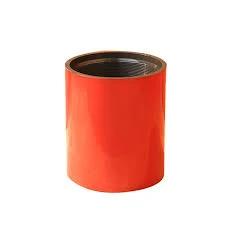- Afrikaans
- Albanian
- Amharic
- Arabic
- Armenian
- Azerbaijani
- Basque
- Belarusian
- Bengali
- Bosnian
- Bulgarian
- Catalan
- Cebuano
- Corsican
- Croatian
- Czech
- Danish
- Dutch
- English
- Esperanto
- Estonian
- Finnish
- French
- Frisian
- Galician
- Georgian
- German
- Greek
- Gujarati
- Haitian Creole
- hausa
- hawaiian
- Hebrew
- Hindi
- Miao
- Hungarian
- Icelandic
- igbo
- Indonesian
- irish
- Italian
- Japanese
- Javanese
- Kannada
- kazakh
- Khmer
- Rwandese
- Korean
- Kurdish
- Kyrgyz
- Lao
- Latin
- Latvian
- Lithuanian
- Luxembourgish
- Macedonian
- Malgashi
- Malay
- Malayalam
- Maltese
- Maori
- Marathi
- Mongolian
- Myanmar
- Nepali
- Norwegian
- Norwegian
- Occitan
- Pashto
- Persian
- Polish
- Portuguese
- Punjabi
- Romanian
- Russian
- Samoan
- Scottish Gaelic
- Serbian
- Sesotho
- Shona
- Sindhi
- Sinhala
- Slovak
- Slovenian
- Somali
- Spanish
- Sundanese
- Swahili
- Swedish
- Tagalog
- Tajik
- Tamil
- Tatar
- Telugu
- Thai
- Turkish
- Turkmen
- Ukrainian
- Urdu
- Uighur
- Uzbek
- Vietnamese
- Welsh
- Bantu
- Yiddish
- Yoruba
- Zulu
Innovative Solutions for Seamless Tubing Couplings in Modern Industrial Applications and Engineering
Understanding Seamless Tubing Couplings An Overview
Seamless tubing and tubing couplings are significant components in various industrial applications, particularly in the fields of oil and gas, chemical processing, and construction. Seamless tubing is noted for its lack of welded seams, which enhances strength and reduces potential points of failure. Couplings, on the other hand, are integral for connecting various sections of tubing, allowing for flexibility and extensibility in systems designed to handle fluids, gases, or other materials.
What is Seamless Tubing?
Seamless tubing is manufactured without any joints or seams, created through processes like extrusion or rotary piercing. This results in a more uniform structure compared to welded counterparts, which can have weak points where the welds occur. The main advantages of seamless tubing include improved durability, higher pressure tolerance, and resistance to corrosion. These characteristics make it an ideal choice for applications where reliability is paramount. Industries often utilize seamless tubing for high-pressure systems, such as hydraulic lines in machinery, where safety cannot be compromised.
The Role of Tubing Couplings
Couplings are devices used to connect two sections of tubing together, enabling the continuity of flow within a system. In seamless tubing applications, coupling effectiveness is crucial, as any leaks or failures at the joint can lead to significant operational hazards. There are various types of couplings, including threaded, compression, and welded couplings. The choice of coupling depends on factors such as pressure requirements, the nature of the fluid being transferred, and installation ease.
One common type of coupling used in conjunction with seamless tubing is the compression coupling. This type of coupling works by compressing a ring around the tubing, ensuring a tight seal. This method is favored for its straightforward installation process and the strong hold it provides without requiring specialized welding equipment. Another option is the threaded coupling, which involves screwing one tube into another. This method can be advantageous in scenarios requiring frequent disassembly and reassembly.
seamless tubing coupling

Applications of Seamless Tubing Couplings
The applications of seamless tubing couplings are broad and varied. In the oil and gas industry, for instance, they play a crucial role in drilling, production, and transportation operations. Seamless tubing couplings must withstand extreme pressures and corrosive environments, necessitating high-quality materials like stainless steel or special alloys.
In the chemical processing sector, seamless tubing is often used to transport reactive substances safely. The absence of seams mitigates the risk of leaks, which is vital in handling hazardous materials. Couplings in this environment must not only provide a secure connection but also be resistant to the specific chemicals being used.
In construction, seamless tubing can be vital for structural applications, such as supporting scaffolding or piping systems where high load-bearing capacity is required. Couplings used in these situations must be robust and capable of maintaining structural integrity under stress.
Conclusion
Seamless tubing and its associated couplings represent a cornerstone in many industrial systems, offering unique benefits due to their strength, reliability, and versatility. As industries continue to evolve, the need for advanced materials and connecting solutions like seamless tubing couplings will grow. Innovations in manufacturing processes and materials science will likely lead to even more efficient and reliable coupling solutions, further enhancing the safety and efficiency of various industrial applications. Understanding the significance of these components is essential for anyone involved in engineering, manufacturing, or maintenance within these sectors.
-
Tubing Pup Joints: Essential Components for Oil and Gas OperationsNewsJul.10,2025
-
Pup Joints: Essential Components for Reliable Drilling OperationsNewsJul.10,2025
-
Pipe Couplings: Connecting Your World EfficientlyNewsJul.10,2025
-
Mastering Oilfield Operations with Quality Tubing and CasingNewsJul.10,2025
-
High-Quality Casing Couplings for Every NeedNewsJul.10,2025
-
Boost Your Drilling Efficiency with Premium Crossover Tools & Seating NipplesNewsJul.10,2025







